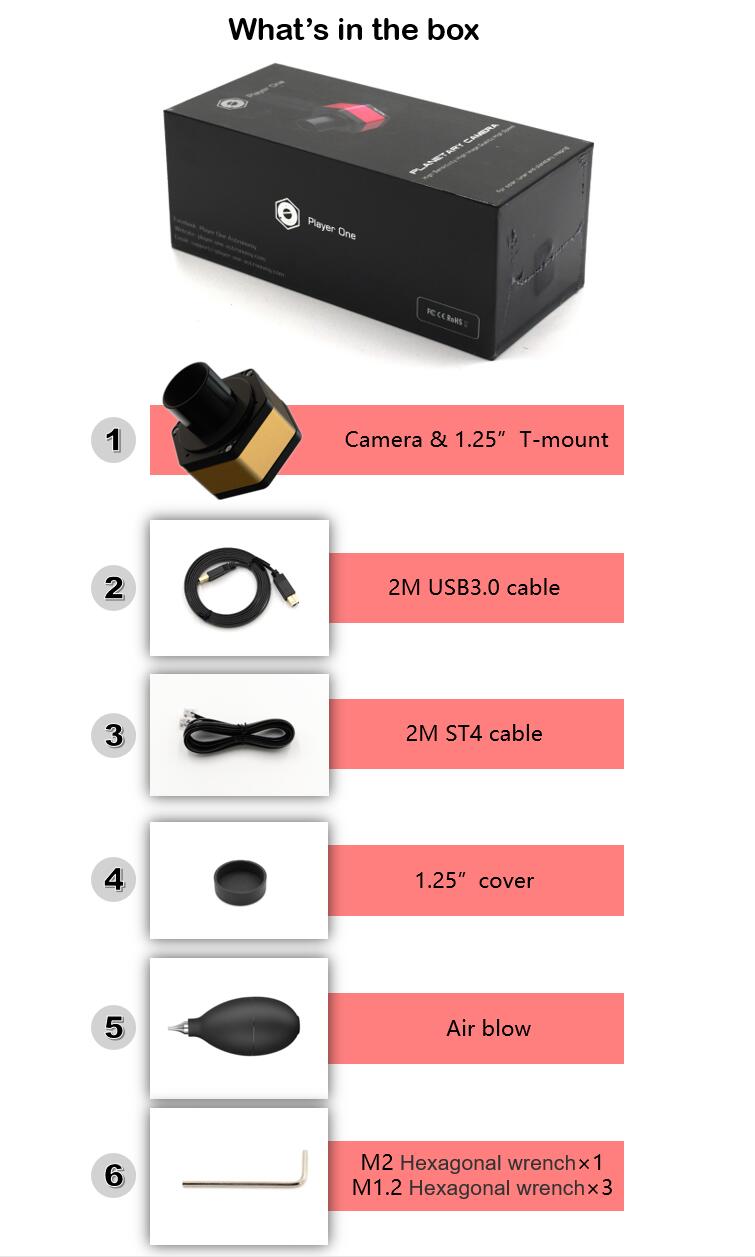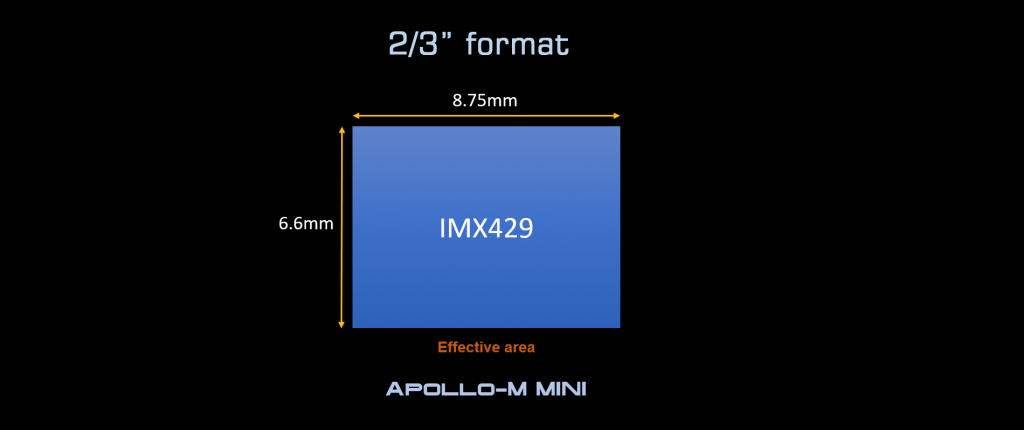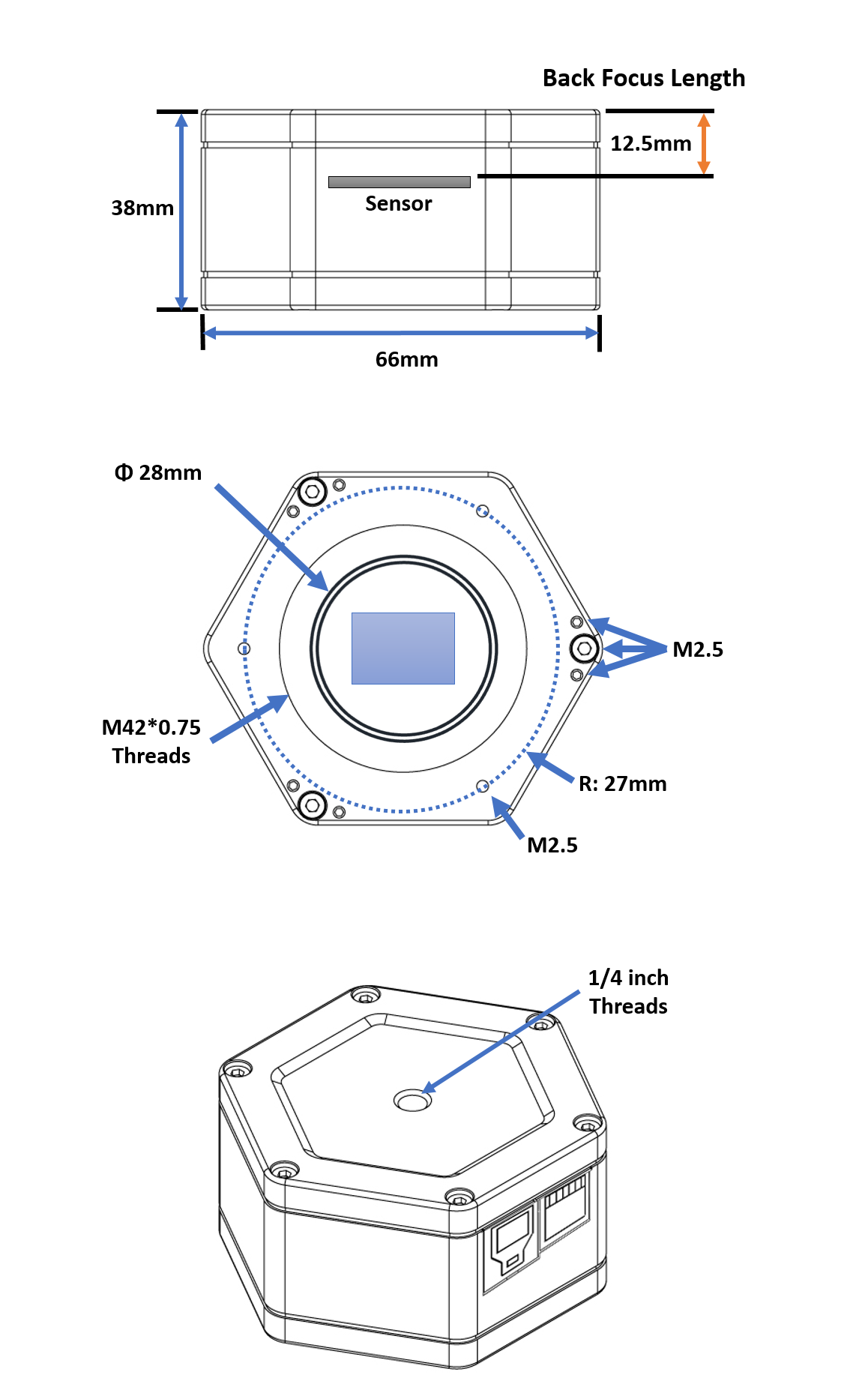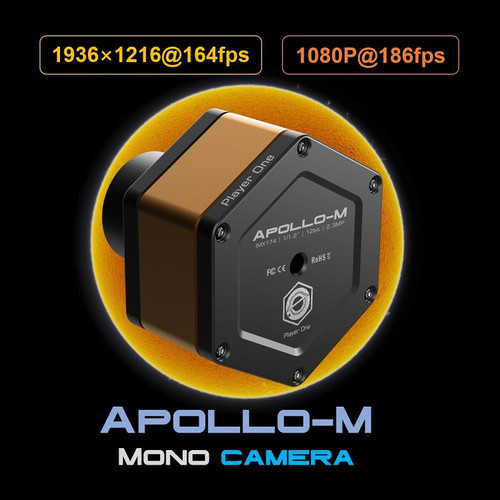Product Overview
Product Description
Apollo-M MINI is a solar camera developed by Player One Astronomy, which adopts the Sony IMX429 2/3” format monochrome sensor. The 4.5um pixel size accommodates a well depth of 24.8Ke with a total of 2.8MP (the resolution is 1944*1472), and the diagonal is 11mm.
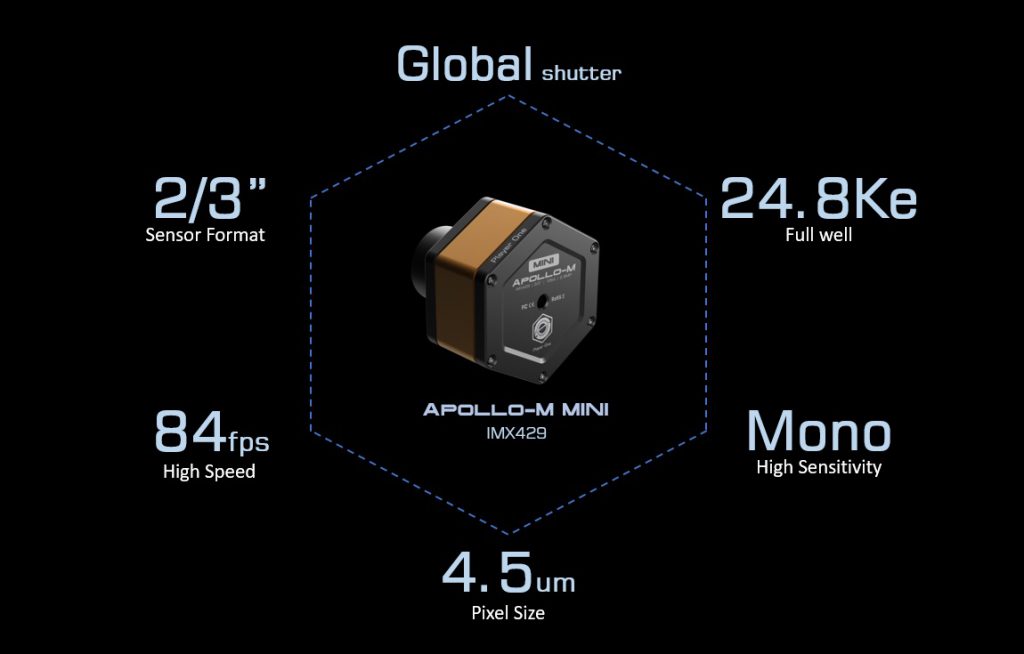
Pregius Technology
IMX429 sensor is based on Pregius 3rd Generation. According to the introduction of technical documents, pixel size of 3rd Gen usually is 4.5um, and full well is 25Ke.

Format
IMX429 has 2/3? format, this size is between IMX178 and IMX174.
Pixel size
4.5um pixel size is smaller than IMX174 camera, which means it can works provide higher resolution in same focal length.
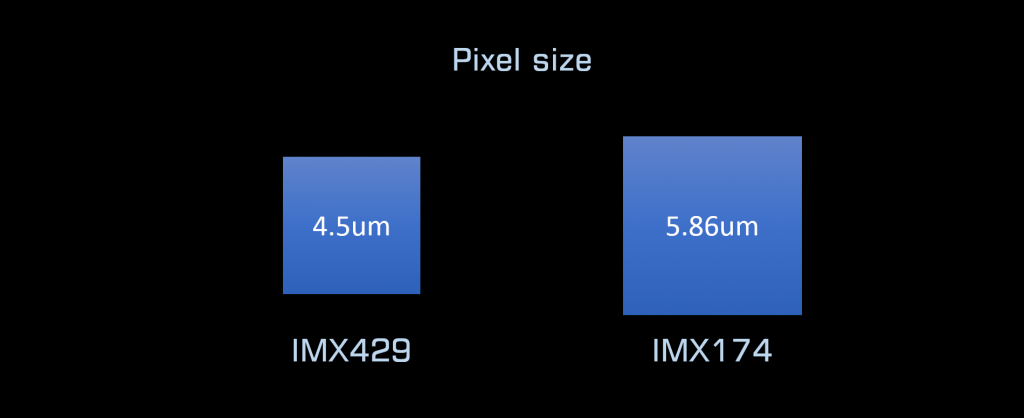
HCG mode
Apollo-M MINI has HCG mode, when Gain>71 HCG will open automatically.
Highlights
With global shutter, Apollo-M MINI are very suitable for sun and space station imaging.
4.5um pixel size and resolution 1944*1472, very easy to get high resolution images of the Sun.
For better contrast, Player One Photosphere 10nm filter will be a good choice.
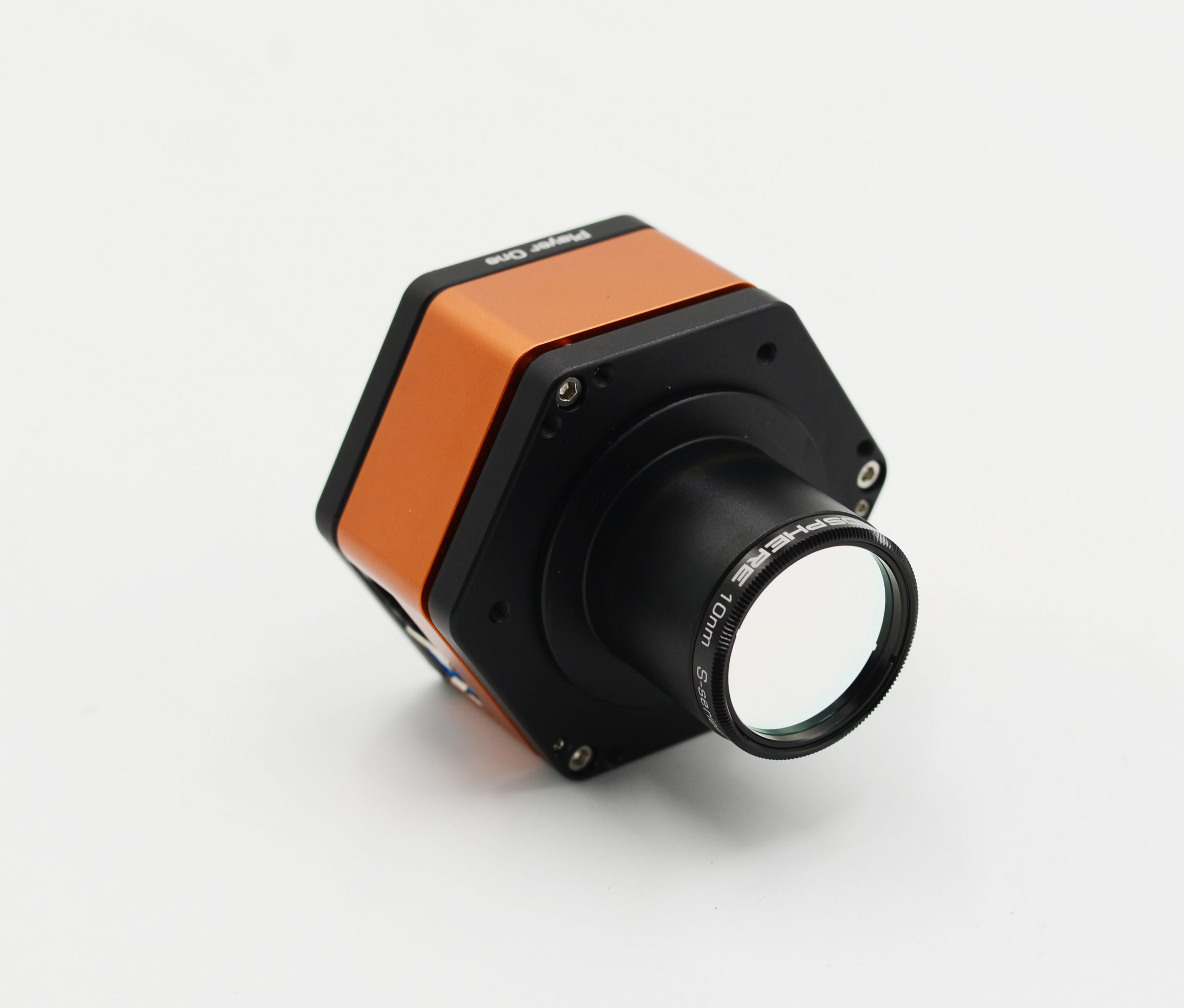

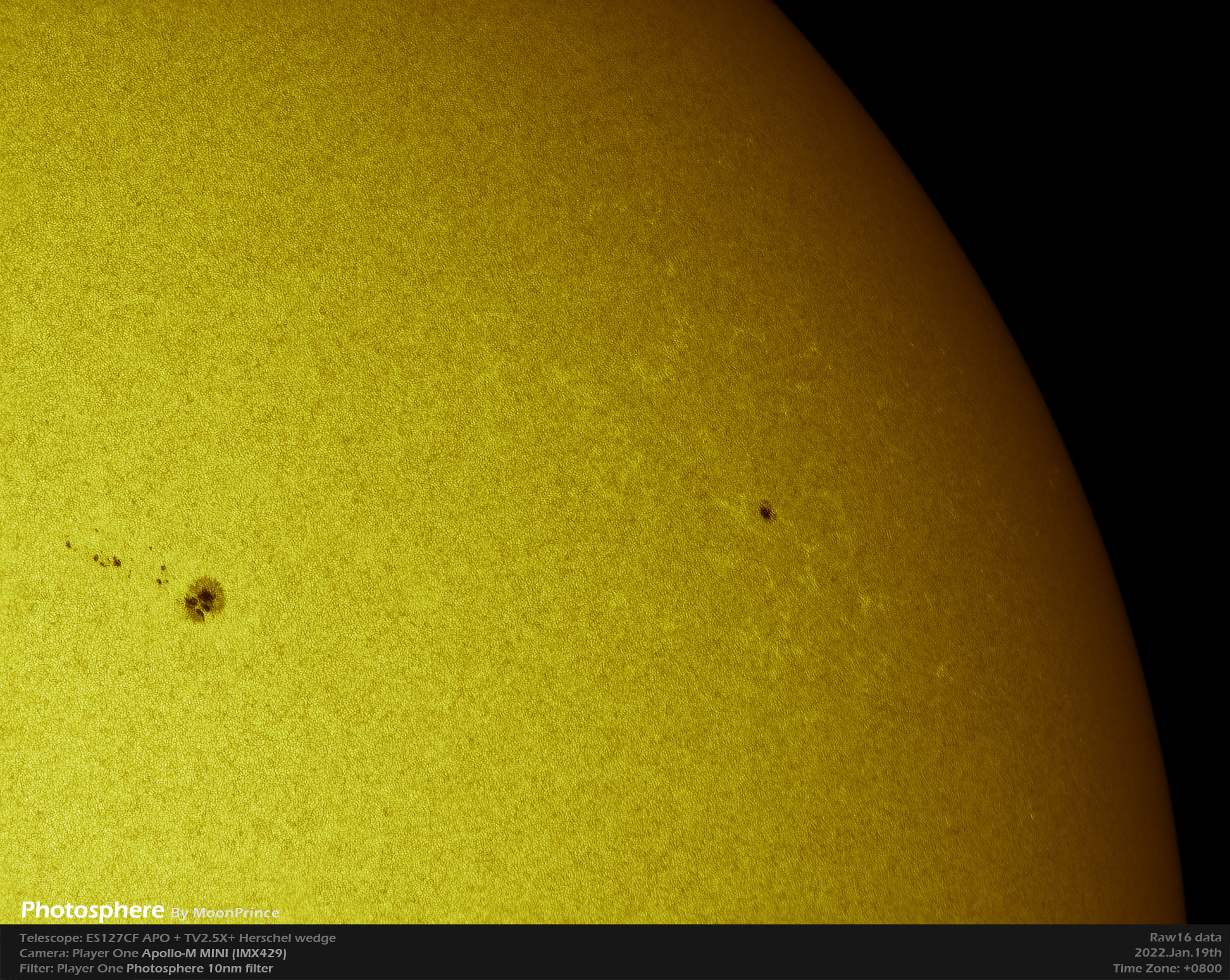
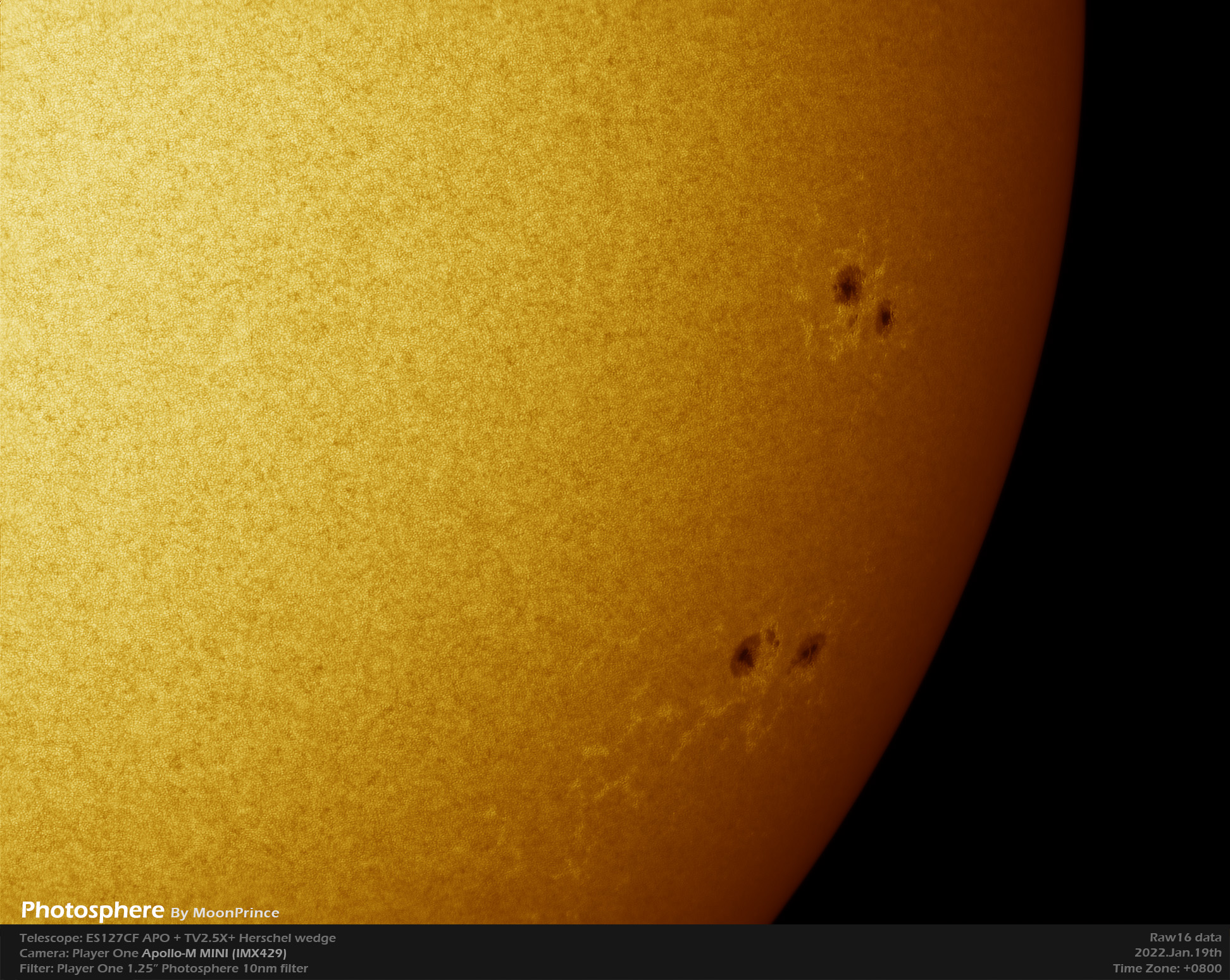
The Chromosphere in H-Alpha
introduce new 1.25? ERF filter for Quark Chromosphere (Ha verstion) , intend to reject energy and extend life time of your Quark.
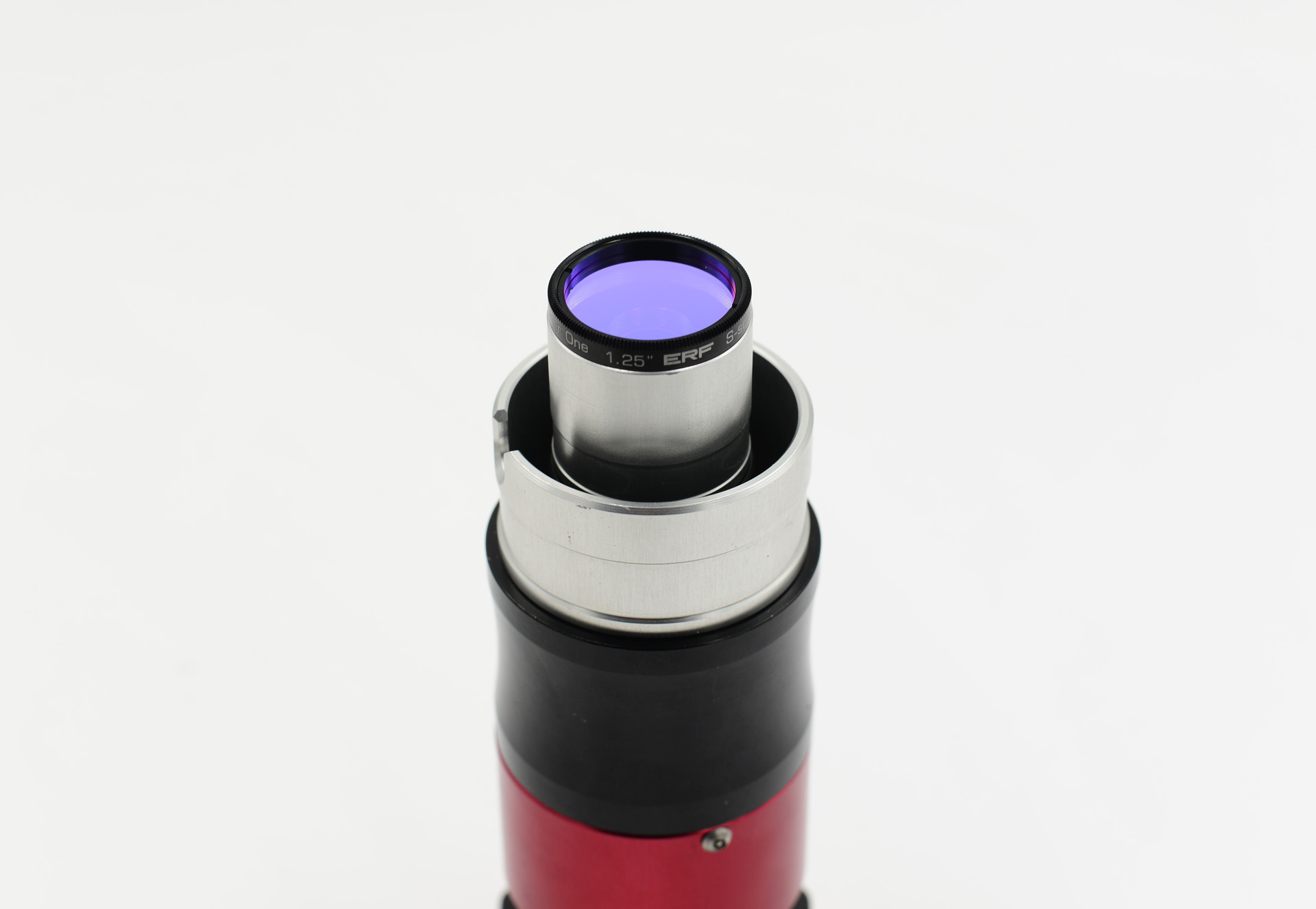
With Lunt or other solar telescopes, Apollo-M MINI also can provide very good performance @ f15-f20 focal ratio.
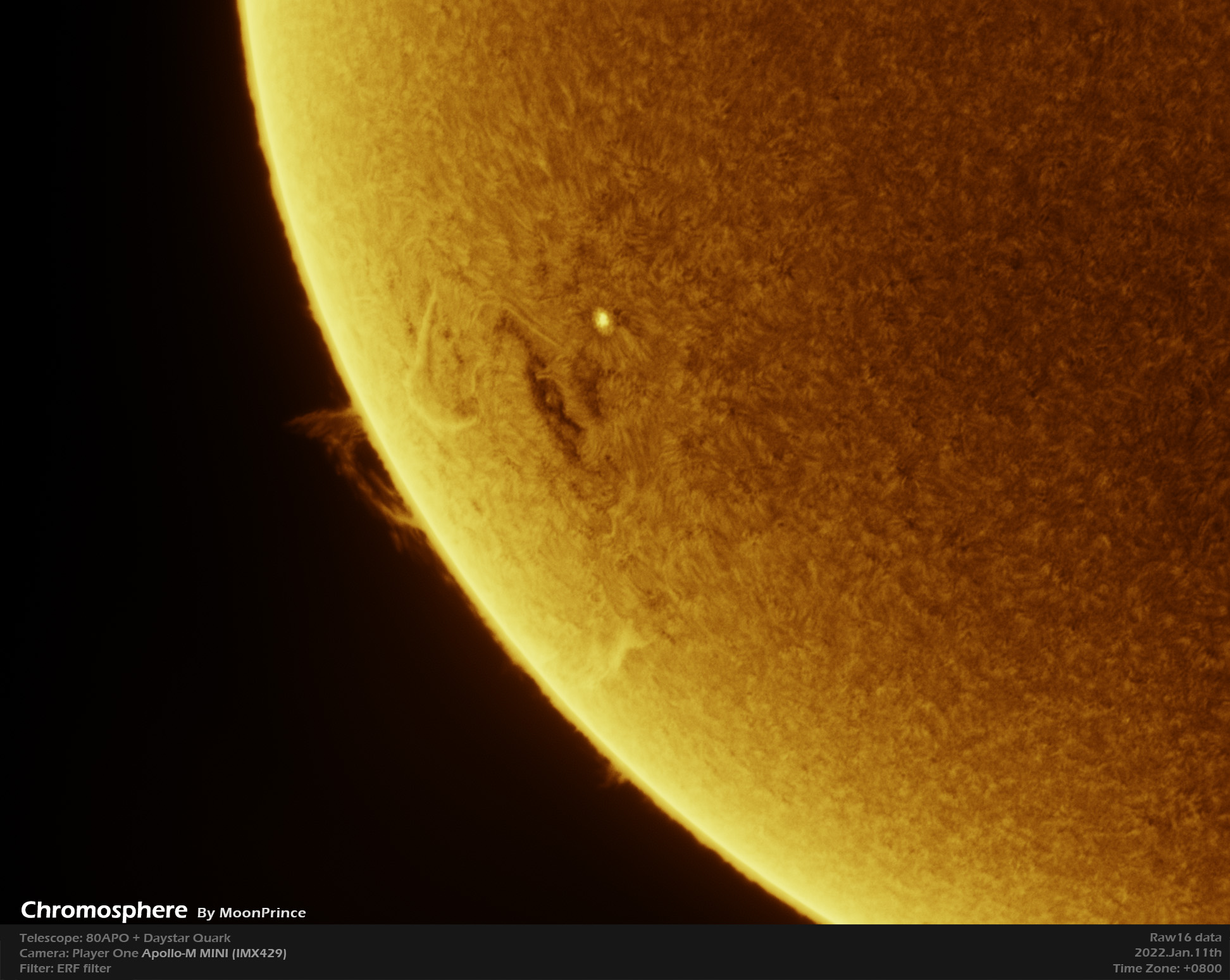
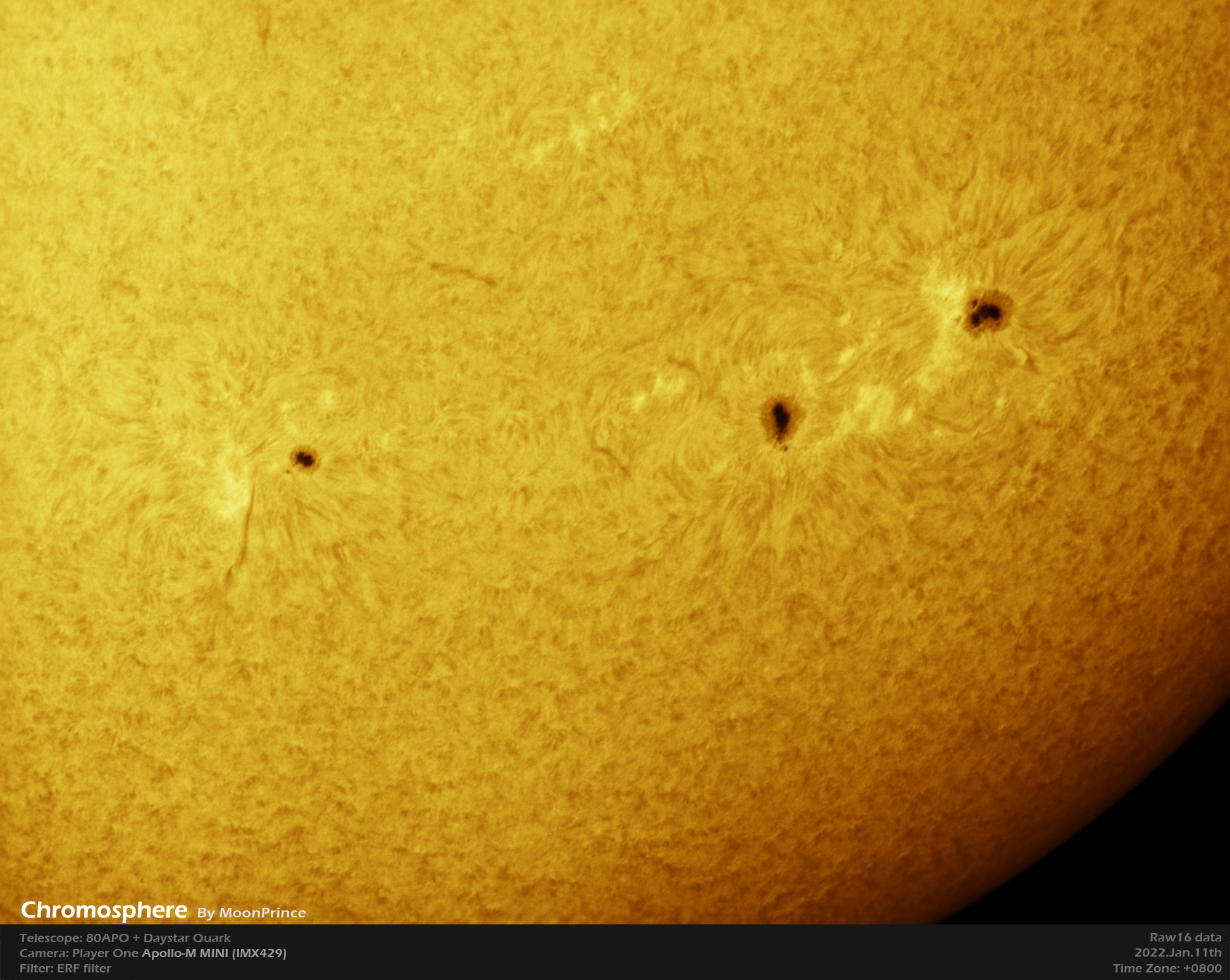
With Daystar Quark (4.2X version), we found that if use Bin2 mode, 4.5um become 9um, both full-well and brightness will increase 4X.
In 16bit RAW data, BIN2 mode can provide real 14bit data, it’s a big advantages in imaging and post-processing.
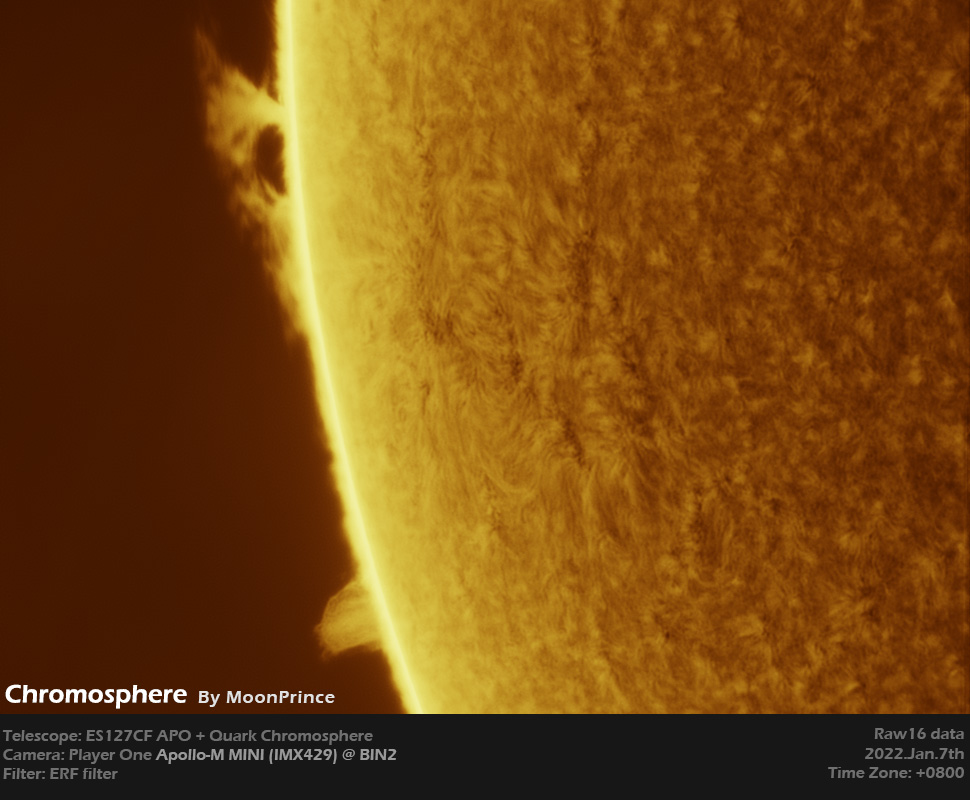
Features:
The naming of Player One Astronomy cameras is unique. Solar camera line, named after Apollo, the god of the sun. The suffix of the name describes the camera’s biggest feature.
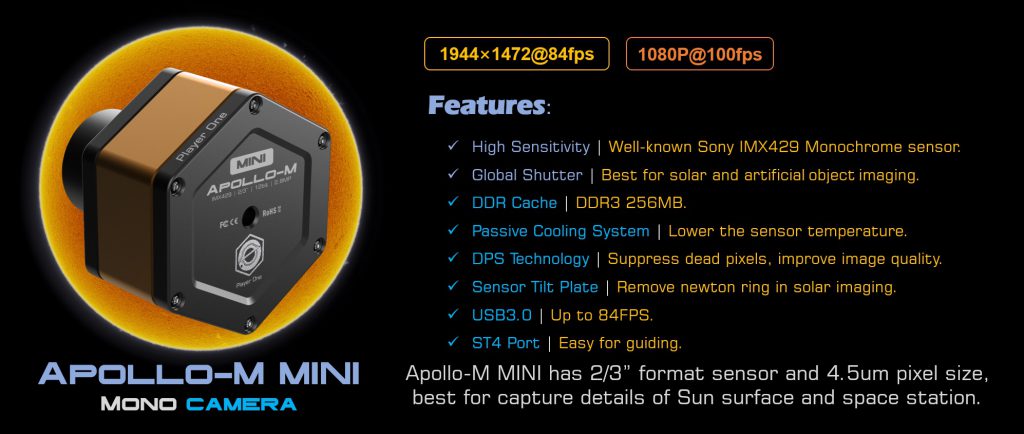
Drivers and softwares download: http://player-one-astronomy.com/service/software/
Manuals download: http://player-one-astronomy.com/service/manuals/
Cutting-edge Design
The planetary cameras developed by Player One Astronomy uses a scientific and technological regular hexagon to construct the main body line, supplemented by round chamfers to achieve both rigidity and flexibility. The positive orange, which is imply solar, is matched with the low-key and steady black, and the super-fine frosting process on the entire surface makes the camera look luxurious and cool, highlighting the style of high-end players, can’t take my eyes off ??
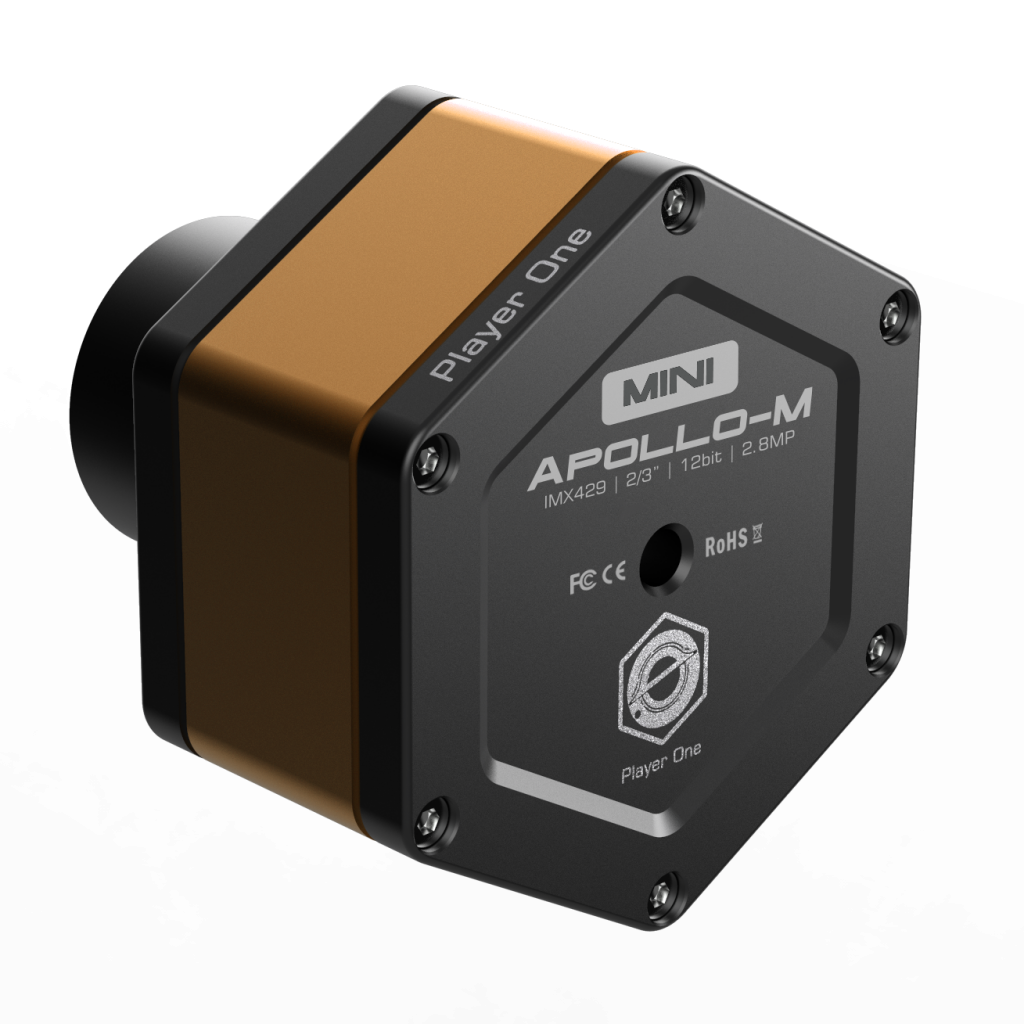
2nd Gen – Sensor Tilt Plate
When taking solar photograph with prominence telescope, the Newton ring is annoying. Smoother solar image without Newton ring could be taken by adjusting the focal plate. Get a much smaller field curvature of the telescope.
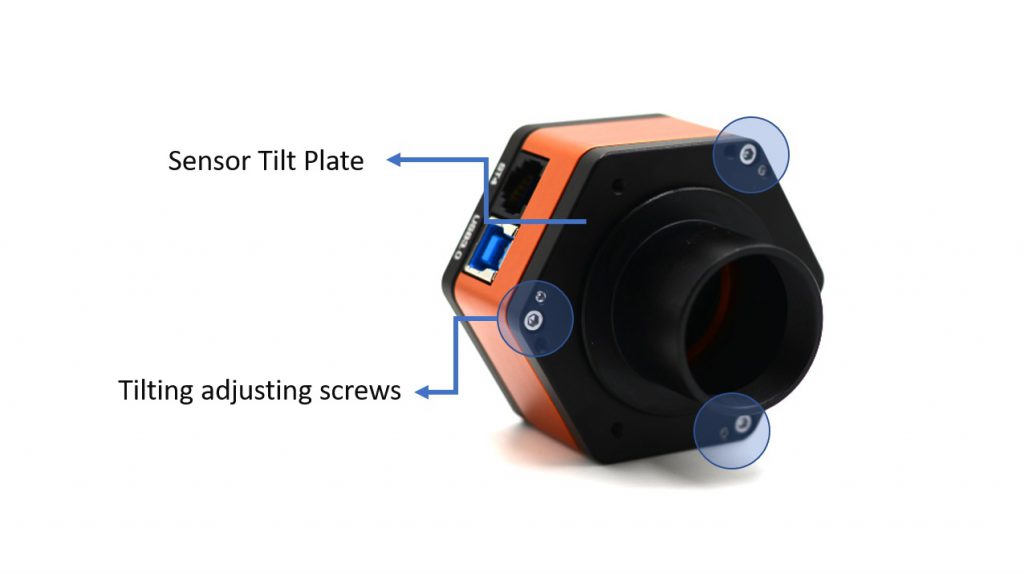
The built-in high-density sponge shading pad can block the light from the side slits without any side leakage.
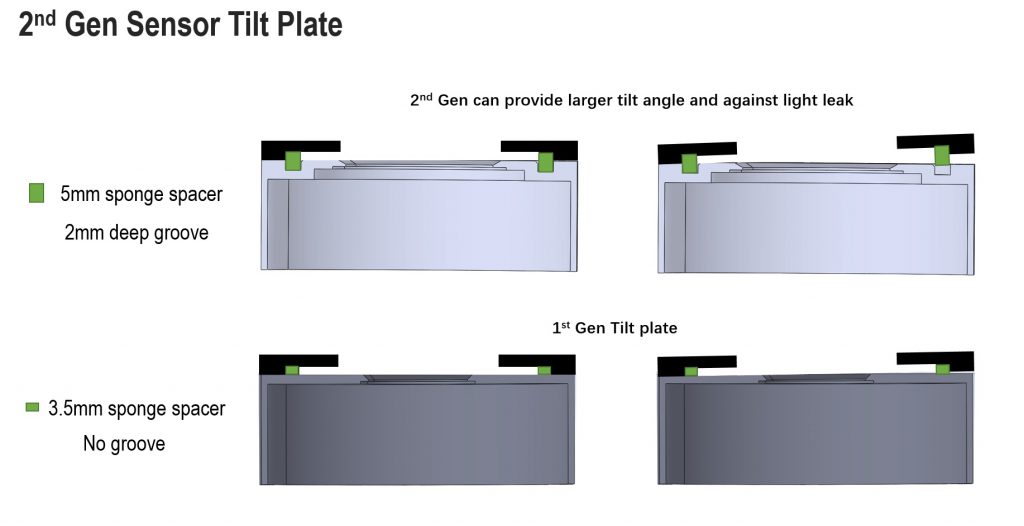
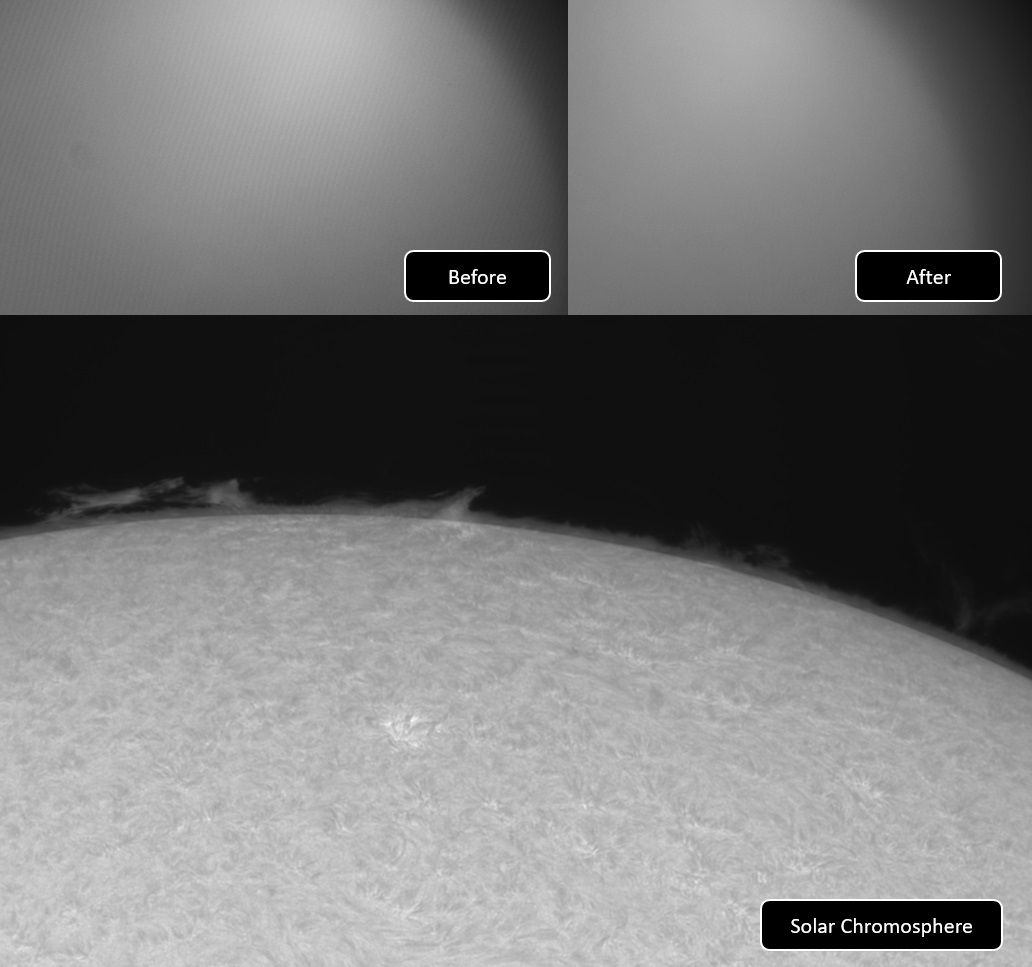
Passive Cooling System
Solar cameras working in daylight, temperature could be much higher than night. Heat of global shutter sensors will be a problem, especially some big format like IMX432. Player One add a new features called Passive Cooling System to conduct the heat from the sensor out.
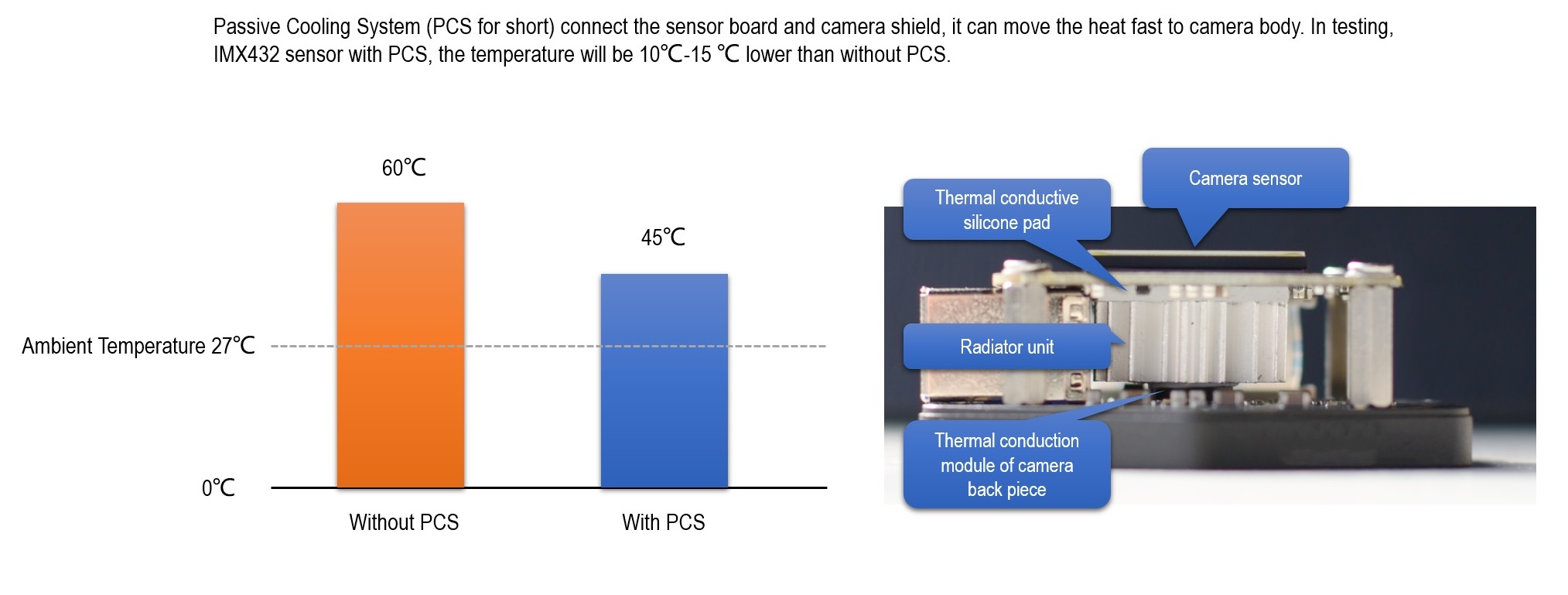
256M DDR3 Cache
Player One Astronomy cameras are the first one who adpots the DDR3 cache in all planetary cameras in the world! It helps stabilize and secure data transmission, it effectively avoids frame dropping and greatly reduces readnoise.
With the DDR3 cache, the camera does not have high demands on computing needs any longer, it will still has excellent performance even if it is connected to a USB 2.0 port.

DPS technology
The planetary cameras from Player One Astronomy have DPS (Dead Pixel Suppression) technology. The DPS is anaylse many dark frames to find out thoes fixed abnormal pixel and record the map in camera memory. In imaging, each exposure frames, thoes position of dead pixels will be given a median value according to the active pixels around that abnormal pixel.

?
Overvoltage and overcurrent protection mechanism
Player One cameras produced by the number one player ensures the safety of your camera and other equipment through overvoltage and overcurrent protection mechanisms.
Data Port
When the camera is connected to the USB3.0 interface and full-resolution preview is used, it can reach 84 FPS in RAW8 mode (12bit ADC). When recording images, since the actual writing speed will be affected by the writing speed of the hard disk itself, when the hard disk writing speed is slow, the recording may not reach the theoretical speed. It is recommended that you use a high-quality solid state drive to record data to give full play to the performance of the camera.
Use the ST4 guide cable to connect the camera and the AUTO GUIDE port of the equatorial mount to do guiding.
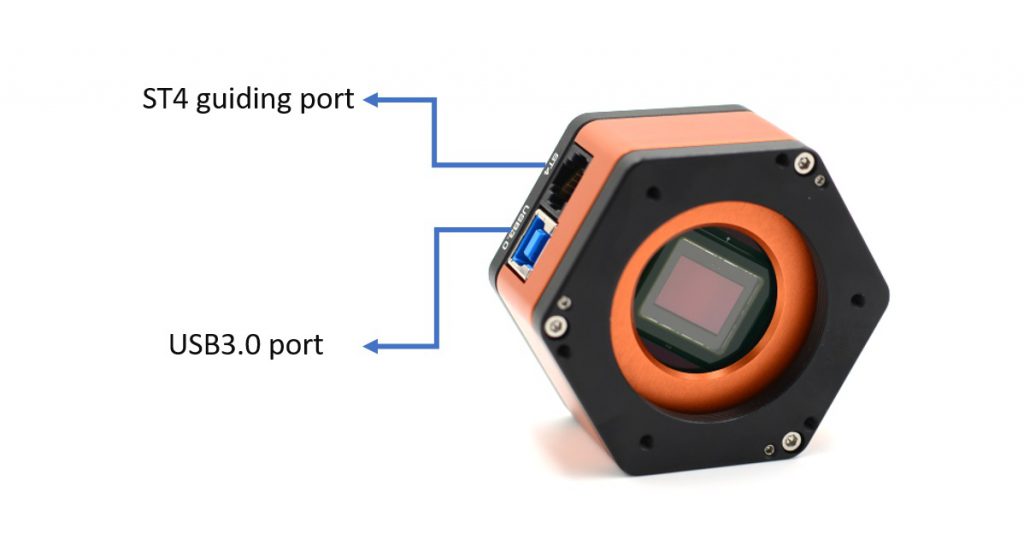
Performance
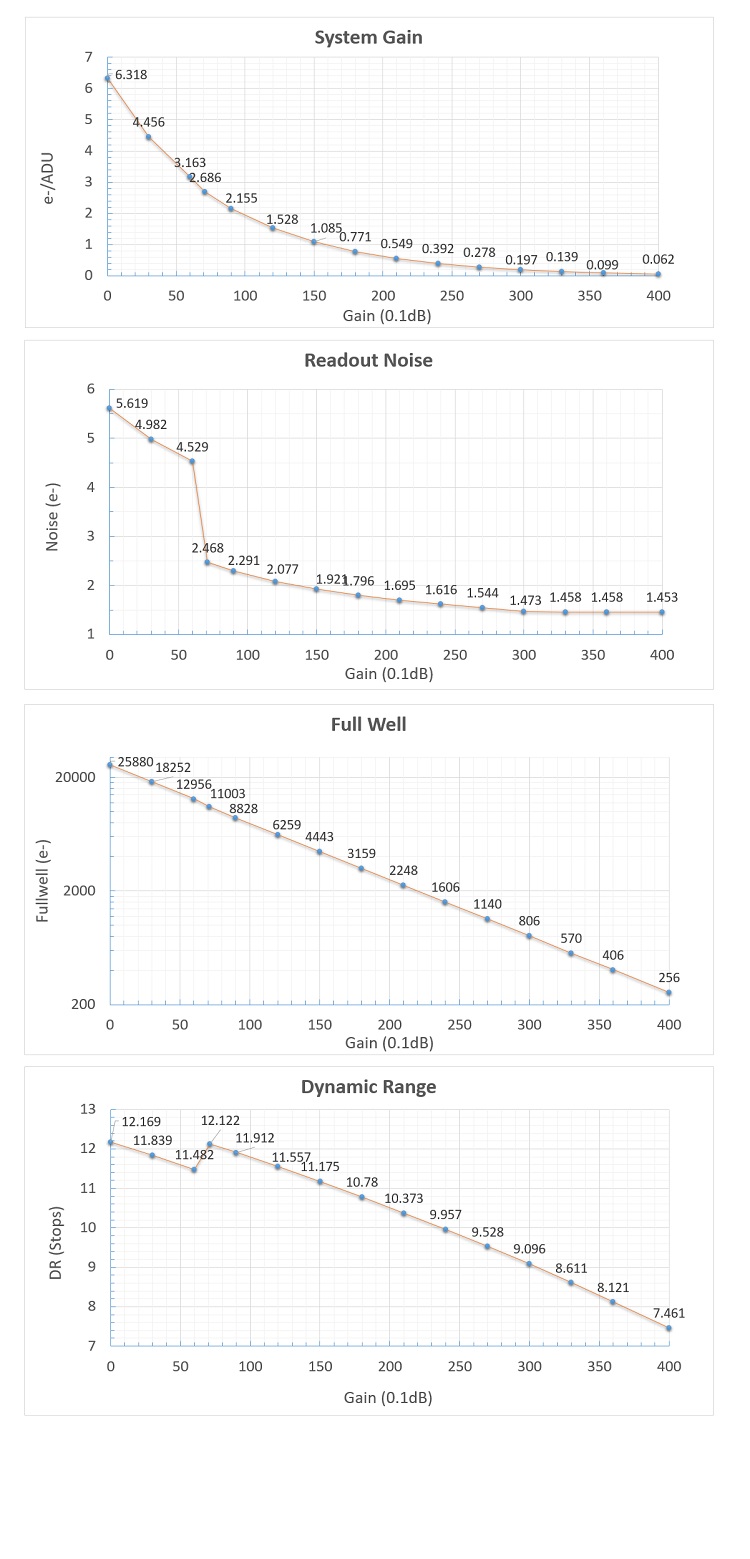
Readout Noise
Regarding readout noise, we solemnly promise that all values are obtained from actual tests. And for users, you could use Sharpcap 4 for testing. SC4 has a function called Sensor Analysis, provide a very simple way to test readout noise.
We wrote a tutorial on our website: https://player-one-astronomy.com/service/manuals/
After many rigorous readout noise tests, this camera can reach a low readout noise of 1.45e at a gain of 380.
If you are interested in readout noise testing, you may try it yourself, which is very simple.
QE Curve
Absolute Peak Value is about 77%.

HCG Mode
The Apollo-M MINI camera has a unique HCG mode. The HCG mode can greatly reduce the readout noise and retain the same high dynamic range as the low gain.
Mechanical Drawing
